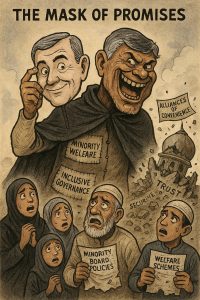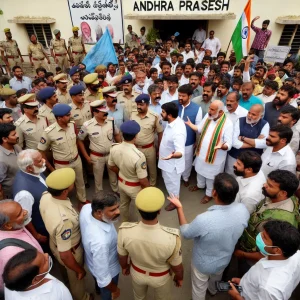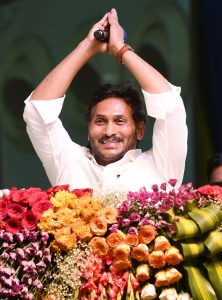
In the aftermath of the recent elections, a provocative question has emerged on social media: Is the Bharatiya Janata Party (BJP) becoming the new Congress? This sentiment is gaining traction, with many asserting that the BJP’s actions mirror those of the Congress party in the past. Some commentators suggest that the charisma of Prime Minister Narendra Modi is waning, drawing parallels between the current political landscape and the fatigue that characterized the UPA 2.0 government. But how valid are these claims? Let’s delve into the arguments being put forth.
Concept of Party Cartelization
At the heart of this debate is the idea of party cartelization, a phenomenon where political parties with distinct ideologies begin to adopt similar strategies to maintain power. Critics argue that the BJP is following this path, compromising its foundational principles in the process. This shift raises questions about the party’s commitment to its core ideology and whether it is becoming more focused on electoral success than on its foundational values.
Argument 1: The BJP as a “Washing Machine”
One striking criticism claims that the BJP has become a “washing machine,” incorporating leaders from non-Hindutva parties, including Congress. This influx of former leaders is said to dilute the party’s core Hindutva ideology. Reports suggest that in the 2024 elections, nearly 30% of BJP candidates were drawn from other parties, including 37 ex-Congress leaders. Ironically, 70% of these external candidates did not succeed in their elections. Critics argue that the BJP took a substantial risk by compromising its ideology without seeing a payoff, likening it to spending one’s salary on a gift that goes unappreciated.
Argument 2: Abandoning Hindutva Ideology
Another major point raised is that the BJP has moved away from its Hindutva ideology in favor of a more inclusive approach, encapsulated in the slogan “Sabka Saath, Sabka Vikas” (Together with all, Development for all). JP Nadda’s statement that “saffron and BJP are not synonymous” surprised many within the party. Critics suggest that this indicates a strategic pivot towards Muslim outreach. For instance, in 2023, the BJP-led alliance approved ₹10 lakh for the modernization of madrasas, focusing on integrating science and mathematics alongside religious education. This initiative, along with the launch of various programs aimed at improving socio-economic conditions for Muslims, has further fueled skepticism among party loyalists.
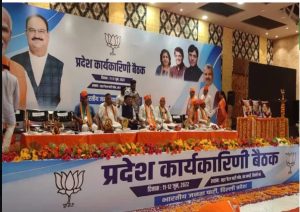
Muslim Outreach by BJP
The government’s commitment to Muslim outreach includes multiple initiatives, such as the “Prime Minister’s Development Program for Minorities” aimed at enhancing their socio-economic conditions. Programs like the “Pasmanda Muslim Outreach Program” target backward caste Muslims, while the “Sufi Dialogue Maha Abhiyan” seeks engagement with Sufi communities. Additionally, the “Modi Mitra Campaign” focuses on Muslim-majority parliamentary constituencies, and the “Sneha Milan” initiative aims to attract Muslim voters ahead of the 2024 elections. Reports indicate that more Muslim girls received scholarships under the Modi administration than during the UPA era.
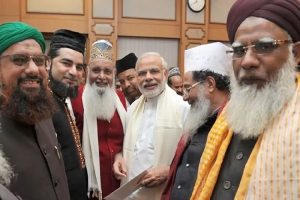
Argument 3: Weakening Governance Model
Critics also point to a perceived decline in the BJP’s governance model, particularly regarding law and order. While states like Uttar Pradesh and Assam have been stable under BJP rule, other areas, such as Delhi, have faced challenges. For instance, the Delhi riots that followed the Shaheen Bagh protests highlighted shortcomings in police responsiveness, despite being under the purview of the Home Ministry. In states like West Bengal, violence has erupted post-elections, affecting opposition workers, including those from the BJP.

Frequent U-Turns
Another significant criticism is that the BJP has begun to exhibit the same tendency for policy U-turns as Congress. For example, the party initially passed controversial farm laws in 2020 but later repealed them after widespread protests. Similarly, the government withdrew a draft of the Broadcast Bill following public backlash, and an advertisement for 45 UPSC lateral entry posts faced protests, leading to its cancellation. Many argue that these frequent reversals undermine the BJP’s credibility and fuel further dissent.
Argument 4: Modi Turning into Manmohan Singh?
Lastly, some critics argue that after a decade in power, PM Modi is increasingly resembling a figurehead leader akin to Manmohan Singh during the UPA 2.0. This perception of “leadership fatigue” raises concerns about his effectiveness. Observers note that some of Modi’s schemes and promises remain unfulfilled, and his public appearances have decreased. Critics suggest that his once-commanding presence has softened, with fewer direct interventions on pressing issues.
Conclusion
So, is the BJP truly becoming the new Congress? While the party still maintains a strong base and continues to push forward with its policies, the criticisms regarding ideological dilution, governance challenges, and Modi’s leadership style cannot be overlooked. As the political landscape continues to shift, the implications of these arguments will be pivotal in shaping the future of the BJP and its relationship with the electorate. Whether the BJP is genuinely evolving into the new Congress remains a question that will be answered in the unfolding political narrative.


